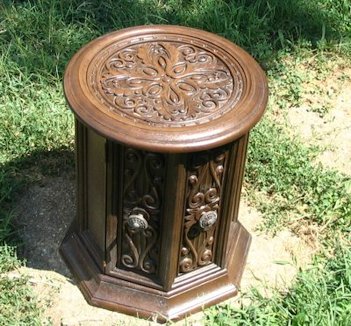| Box is set on a level area and poured with PMC 724 from Smooth-on. Room was left in the box to pour a plaster mold backup. It is more economical to just cover the model 1/2" or so with mold rubber, and fill the rest with plaster.
This was poured extra thick and level, so there is
no need for a backup, but it costs more in material to to it this way.
All Proteus cares about is the work, he disregards his personal safety and well being. |
What we have here is a very durable rubber mold
that be used to cast left over stucco finish, moulding plaster or concrete. The inside should
be sprayed with mold release every pour. The excess mold release should be wiped off. Too much mold release can soften and weaken the surface.
Proteus just did a decorative fireplace hearth
and some other cool stuff.
Please check back for some more unique designs..
|
